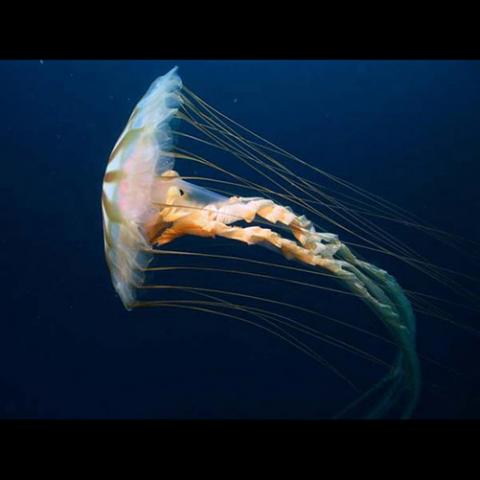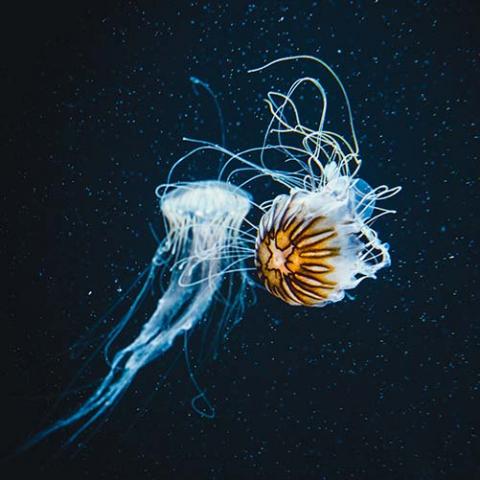NAMES
TAXONOMY
Hong Kong
Issued:
Stamp:
Chrysaora melanaster
Hong Kong
Issued:
Stamp:
Chrysaora melanaster
Hong Kong
Issued:
Stamp:
Chrysaora melanaster
Genus species (Animalia): Chrysaora melanaster
Chrysaora melanaster, commonly known as the northern sea nettle or brown jellyfish, is a species of jellyfish native to the northern Pacific Ocean and adjacent parts of the Arctic Ocean. It is sometimes referred to as a Pacific sea nettle, but this name is also used for Chrysaora fuscescens; the name Japanese sea nettle was also used for this species, but that name now exclusively refers to Chrysaora pacifica. Although jellyfish kept in public aquariums sometimes are referred to as Chrysaora melanaster, this is the result of the historical naming confusion and these actually are Chrysaora pacifica.
Description
The medusa of the northern sea nettle can reach 60 cm (2 ft) in diameter with tentacles growing up to 3 m (10 ft). The number of tentacles is up to 24 (three per octant). It dwells at depths of up to 100 meters, where it feeds on copepods, larvaceans, small fish, large zooplankton, and other jellies. The sting is mild, although can cause serious skin irritation and burning. The lifespan is unknown.
Habitat
The northern sea nettle is found in open water of temperate northern Pacific Ocean, Arctic Ocean and especially the Bering Sea.
Ecology
Pollock can be both the food of the northern sea nettle and also the competitor for potentially limited sources of prey.
Status
The total biomass of the northern sea nettle has increased in recent years as climate change has caused a more stable and productive surface layer. This increased stability of the water column would also have contributed to the warmer surface temperatures found in late summer in the 1990s, leading to increased growth and survival of the northern sea nettle.
Reference: Wikipedia



